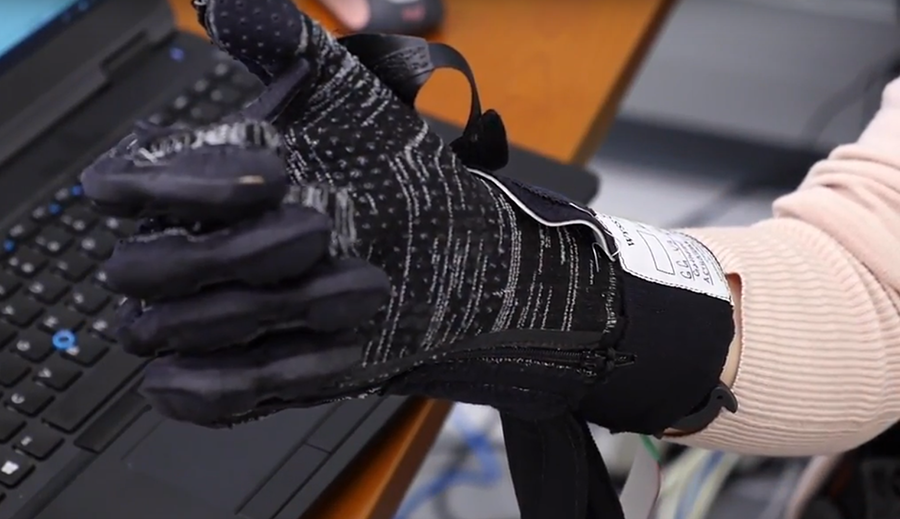Tim Gatautis suffered a spinal cord injury in a swimming accident nearly a decade ago. He’s been in the chair ever since. He’d like to be able to do more for himself. That’s what brought him to Harvard University, where he helps test new wearable robotic devices designed for hand and arm rehabilitation.
“I’ve been telling people about it because it’s pretty exciting. It has given me hope. Seems like it inspired me to, you know, do things I didn’t think I could do before,” said Gatautis.
A YouTube video by Science Nation shows, how with support from the National Science Foundation, designer roboticist Conor Walsh and a team are developing inflatable, soft robots to help people like Tim regain use of their upper extremities.
Read more ReWalk Robotics Says Updated U.S. VA Policy Expanded Access to its Exoskeleton
“So basically, every week or so we’re testing a new type of glove, a new type of sensor, a new type of control scheme. And using this feedback from our participants in our study to understand if we’re moving in the right direction or not,” says Conor Walsh, PhD., John L. Loeb Associate Professor of Engineering and Applied Sciences at Wyss Institute at Harvard University.
“When someone suffers injury such as a stroke or spinal cord injury, they lose function. So, one of the things that we’re thinking of doing is how do we help restore that function so we can enable these people to be able to be more independent.”
Walsh said their approach to doing that is to creating very light-weight, soft wearable robots that people could potentially wear all day every day.
He says some patients could use this wearable robot short term to rehab an injury. Others with more serious conditions might use them as assistive devices on a long term basis.
Challenge is making the robots comfortable to wear and intuitive to use. Sensors control the movement.
“If we tap on the palm sensor, this is the mode where we help our wearers open up the hand first and if you maintain the contact and tap again, that’ll help you grip,” says Kate Zhou of Harvard University.
The wearable robots are made of layered textile materials with balloon like bladders stitched inside. On the top part of the glove, there’s textile that can stretch little bit more, while the inside part has textile that can stretch less. And, it’s that difference in mechanical properties of the textiles that when it gets inflated causes it to have the motion.
Team member and physician Sabrina Paganoni is testing new treatments for people with degenerative muscle disease ALS. She see’s a growing need for these robots.
Read more KIST Develops 3D Soft Robots That Look Like Living Creatures
“The need for assistive devices is gonna continue to increase, because people will live longer, which is great as we develop new treatments. But, at the same time, we need to be able to give them not just longer lives but more fulfilling and productive lives,” says Dr. Sabrina Paganoni of Spaulding Rehabilitation Hospital.
Tim has been working with the robots for just a couple of months, but he’s excited for the future.
“It’s easier to get discouraged and think that you can’t do things, and now with this glove and the shoulder harness, I just see different possibilities like way out of ballpark. Seems like I have things in my reach,” says Gatautis.
The commentator in the YouTube video was Miles O’ Brien for Science Nation.













